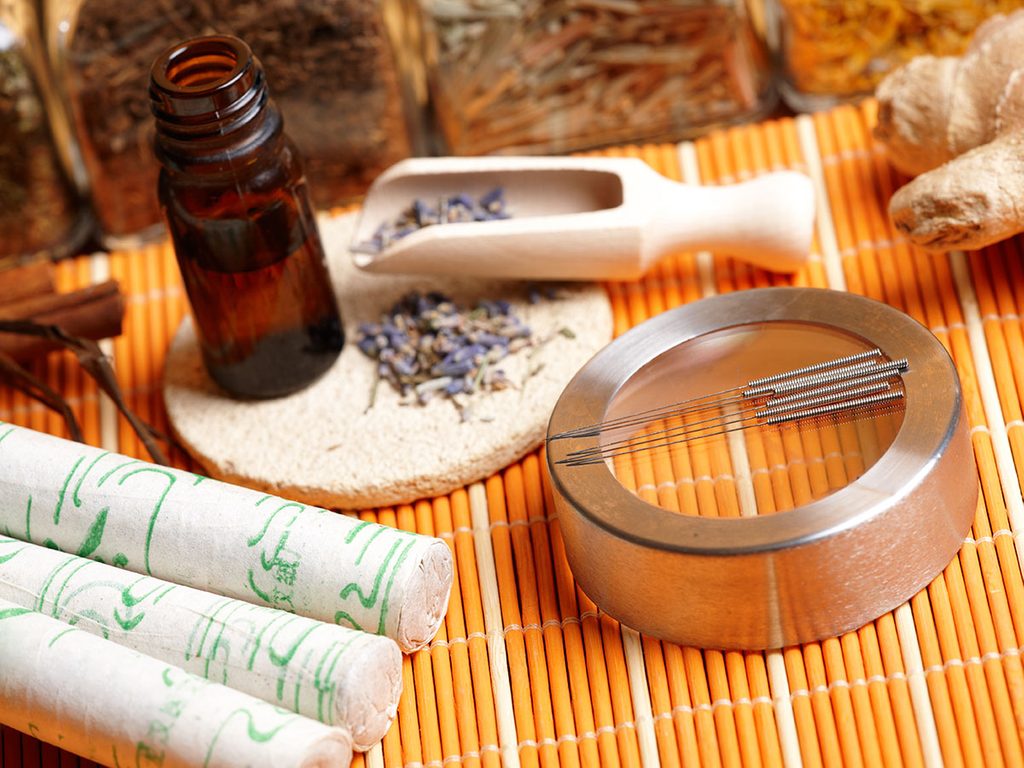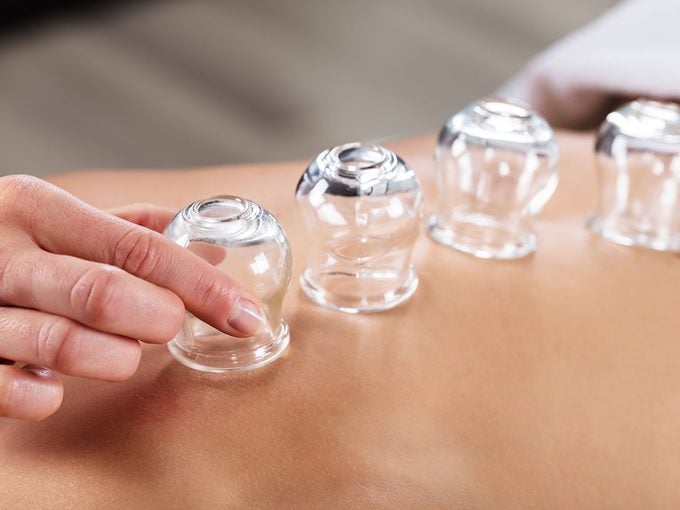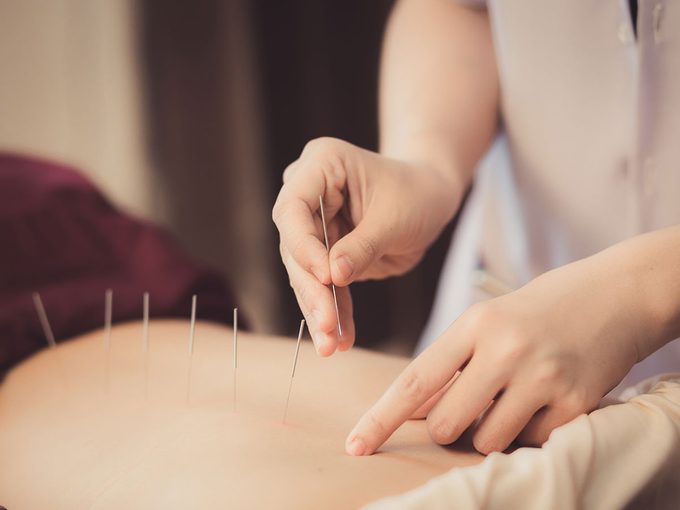Does Traditional Chinese Medicine Work? Here’s What I Learned About TCM in Hong Kong

Some swear by TCM practices like acupuncture, while others say they’re ineffective—and even dangerous. A traditional treatment in China sparked a quest to find answers.
A whiff of hibiscus hangs in the air. My eyelids flicker open slowly and the lowly-lit, burnished wood walls of the treatment room come back into view. I’m in a heady post-massage stupor at the Mandarin Oriental Hong Kong. But it’s not just my muscles that have been worked this time. The hotel’s Meridian Massage is one of several treatments that draw on traditional Chinese medicine to balance the energy meridians in the body—paths through which life force, or qi, are believed to flow—by working on acupressure points.
Traditional Chinese medicine—or TCM—is a centuries-old practice that utilizes acupuncture, acupressure, cupping, tai chi, qigong, and other techniques to treat everything from chronic pain and fatigue to infertility. “It’s about healing and rebalancing the body,” says Clair Beardson, a traditional Chinese medicine practitioner who works as a consultant at the Mandarin Oriental’s spa.
Even in China, the presence of traditional Chinese medicine at a luxury hotel like the Mandarin Oriental—which hosts a large number of international guests—speaks to how mainstream the practice has become. Earlier this year, the World Health Organization also updated its global compendium—a comprehensive resource for information on health conditions and their treatments—to include a chapter on traditional Chinese medicine. Some people, like Vancouver resident Alicia Olafsson, devoutly prescribe to TCM treatments. Olafsson has received acupuncture and taken Chinese herbs for four years. “It’s cured me of my seasonal allergies, which I’ve had my whole life, helped to regulate my menstrual cycle, and reduced my stress levels,” she says.

How does Traditional Chinese Medicine Work?
In order to assess what needs to be targeted in the body, a TCM treatment at the Mandarin Oriental begins with a reading of your pulse, and the quality of the pulse is associated with a particular meridian. When Beardson does this for me, she picks up on my kidney meridian, associated with pain in the knees, legs, and lower back. I ran my first half marathon with shin splints the day before traveling to China and my knees and Achilles heel were killing me, which there was no way for her to know beforehand. I felt an immediate release in my knees after the massage, and it continued to lessen throughout my stay.
What do the experts say?
As the popularity of TCM continues to rise, some medical experts are skeptical. Critics point to a lack of empirical evidence to support TCM’s efficacy, and the danger inherent in turning to TCM as the primary form of treatment for serious diseases like cancer. Even within the complementary medicine community, health workers approach TCM with a degree of caution. “I think it’s very respectful of WHO to include TCM in the compendium, but I would not want it to be seen as an endorsement that all of these therapies are effective and safe,” says Lynda Balneaves, associate professor of nursing at The University of Manitoba and former president of The Society for Integrative Oncology.
A study published by researchers at Yale found that the use of complementary medicine by cancer patients was associated with a greater risk of death than those who didn’t receive complementary treatment. However, other studies such as one published in 2014 by researchers at The University of Pennsylvania are part of a growing body of research that shows acupuncture to be effective in managing symptoms associated with cancer treatment, such as pain, fatigue, and psychological distress. In the Yale study, the patients receiving the complementary treatment also refused conventional cancer treatment, which is at the crux of the issue with TCM.

When is a good time to try Chinese medicine?
“Western medicine is very good at fixing a health issue, like removing cancer from the body, while Chinese medicine heals the body afterwards,” explains Beardson. Because TCM approaches healthcare holistically it also offers a much more individualized approach. When Beardson treats patients, it’s up to them to ensure the treatment’s efficacy through take-home Chinese herbs and following a highly personalized diet and exercise plan. “The days of thinking we can do anything and then go to the doctor and they’ll fix it are gone,” she says. “It’s important that everyone takes responsibility for their own health.”
While not recommended as a primary form of treatment, Balneaves also points to TCM’s efficacy when used properly in conjunction with conventional treatment. “We need more, better-designed clinical trials for TCM, but more cancer care centres in the United States like Sloan Kettering are incorporating acupuncture as part of pain management for cancer patients,” says Balneaves. “Some patients aren’t responsive to traditional treatment methods, so some of these complementary treatments provide a new avenue to explore,” she adds.
The World Health Organization stresses that the compendium’s new chapter is not a scientific endorsement of any TCM practices. “Traditional medicine diagnosis in many countries around the world is currently poorly documented and reported,” says Tarik Jasarevic, a spokesperson for WHO. “The chapter provides the means for doing research and evaluation to establish the efficacy and safety of TCM.”

While I haven’t had another Meridian Massage since returning from China, I have continued with deep breathing exercises that Beardson recommended to strengthen my kidney meridian. My knees and associated Achilles heel injury have continued to heal. Granted, I’ve also been doing more yoga than running, giving my body time to recover. But if there’s a means of healing more quickly—in this case a TCM treatment and at-home practice—that can be used in conjunction with conventional methods, I’m game to try it.
Next, learn when alternative medicine became so popular.




